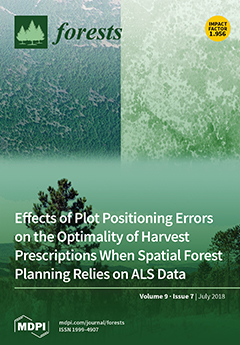Soil respiration (SR) is an important process in the carbon cycle. However, the means by which changes in understory plant community traits affect this ecosystem process is still poorly understood. In this study, plant species surveys were conducted and soil samples were collected from forests dominated by black locust (
Robinia pseudoacacia L.), with a chronosequence of 15, 25, and 40 years (RP15, RP25, and RP40, respectively), and farmland (FL). Understory plant coverage, evenness, diversity, and richness were determined. We investigated soil microbial biomass carbon (MBC), nitrogen (MBN), phosphorus (MBP), and stoichiometry (MBC:MBN, MBC:MBP, and MBN:MBP). Soil enzyme assays (catalase, saccharase, urease, and alkaline phosphatase), heterotrophic respiration (HR), and autotrophic respiration (AR) were measured. The results showed that plant coverage, plant richness index (R), evenness, and Shannon-Wiener diversity were higher in RP25 and RP40 than in RP15. SR, HR, and AR were significantly higher in the forested sites than in farmland, especially for SR, which was on average 360.7%, 249.6%, and 248.2% higher in RP40, RP25, and RP15, respectively. Meanwhile, catalase, saccharase, urease, and alkaline phosphatase activities and soil microbial C, N, P, and its stoichiometry were also higher after afforestation. Moreover, significant Pearson linear correlations between understory plants (coverage, evenness, diversity, and richness) and SR, HR, and AR were observed, with the strongest correlation observed between plant coverage and SR. This correlation largely depended on soil enzymes (i.e., catalase, saccharase, urease, and alkaline phosphatase), and soil microbial biomass C, N, and P contents and its stoichiometry, particularly urease activity and the MBC:MBP ratio. Therefore, we conclude that plant communities are drivers of soil respiration, and that changes in soil respiration are associated with shifts in soil enzyme activities and nutrient stoichiometry.
Full article





